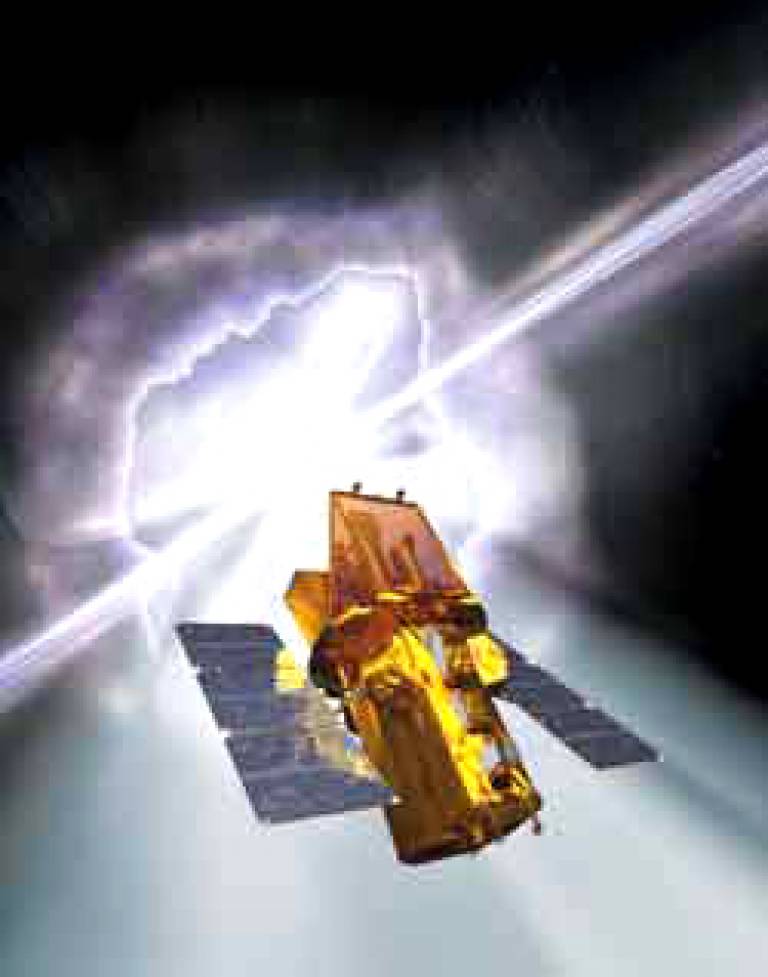Swift in space
1 December 2004
Mullard Space Science Laboratory (MSSL) has successfully taken part in the launch of the world's first spacecraft designed to decipher gamma ray bursts.
 On 20 November 2004, the 126-ft Boeing Delta 2 rocket was launched
from Cape Canaveral, USA. Swift is an international mission, headed by NASA,
and supported by MSSL and the University of Leicester, who between them built
the bulk of two narrow field instruments, the X-ray telescope and UV/optical
telescope, on board the spacecraft.
On 20 November 2004, the 126-ft Boeing Delta 2 rocket was launched
from Cape Canaveral, USA. Swift is an international mission, headed by NASA,
and supported by MSSL and the University of Leicester, who between them built
the bulk of two narrow field instruments, the X-ray telescope and UV/optical
telescope, on board the spacecraft. Gamma ray bursts are the most powerful explosions the universe has seen since the Big Bang, emitting more than one hundred billion times the energy the sun emits in a year. They were first observed during the Cold War, as US military satellites looked for signs of Soviet nuclear activity. Scientists remain baffled about the causes of these bursts. The most popular suggestion is that they mark the birth of a black hole, either due to the collision of two neutron stars, or the explosion of a massive star. The Swift mission will study gamma ray bursts to understand their origins and how the universe has evolved.
Swift's UV/optical telescope was built at MSSL and will measure the UV and optical emissions from the bursts. Professor Keith Mason (MSSL), UK Lead Investigator for UV/Optical Telescope Team said: "The design of the UV/optical telescope is engineered rigorously to withstand the harsh operating environment of space, and to reap maximum advantage from not having to observe through a hazy unstable atmosphere. It uses high speed detectors developed at UCL, which can record the position and time of individual photons of light, making it extremely sensitive."
The telescope will work with other instruments, including a wide field Burst
Alert Telescope and X-ray telescope, to make high precision measurements of
the aftermath of gamma ray bursts. This will lead to a greater understanding
of the origins and causes of gamma ray bursts.
Image: Swift.
To find out more about MSSL and Swift use the links below.
 Close
Close

